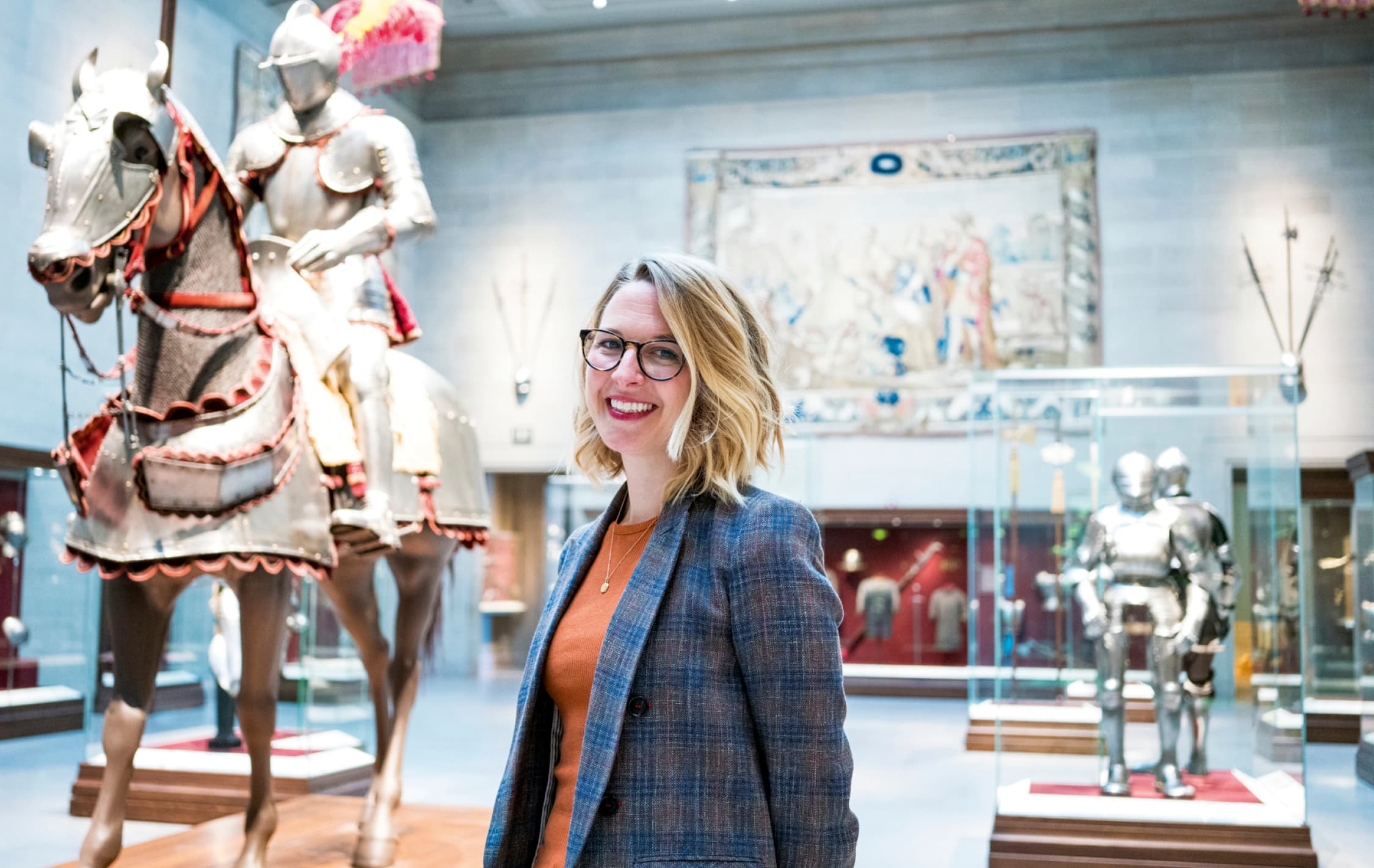
Meet the Staff
- Magazine Article
- Conservation
- Staff
The Department of Conservation’s preventive conservator

Photo: McKinley Wiley
Laura Gaylord Resch is the Cleveland Museum of Art’s assistant preventive conservator. Day to day, she manages the safety and preservation of thousands of art objects. Her work requires her to liaise between museum departments to care for the CMA’s artworks, which helps maintain the accessibility of these objects for visitors’ enjoyment.
“The CMA is one of the only American museums that has had the foresight and support to foreground the importance of preventive conservation. Having a conservator focused on the preventive care of the collection shows we are prioritizing the sustainable and careful use of our collection to ensure its longevity so that we can fulfill our mission of creating transformative experiences through art, ‘for the benefit of all the people forever,’” explains Sarah Scaturro, Eric and Jane Nord Chief Conservator. Here, Laura shares more about her position and what makes preventive conservation crucial to caring for the CMA collection.
What is unique about the CMA having a preventive conservator on staff?
Preventive conservation has only recently emerged as a recognized specialty within conservation. For a long time, preventive care was split among staff members in conservation or collections management departments. Consolidating all those roles under one staff person is a recent innovation at museums in the United States.
What does a preventive conservator do?
An analogy I’ve been using to describe my role is that if this were the medical field, I would be a general practitioner. I’m looking at the health of the collection in a holistic way, across all sorts of material types and art media. And my colleagues in the conservation department are the specialists. If an artwork needs surgery, I refer it to one of them. My focus is on general collections care and material science to make sure everything is well preserved.

Do you hold a specialization in a certain area of conservation (paintings, textiles, sculpture, etc.)?
I completed my university coursework in art conservation at the University of Delaware. When I was going through that program, there was no such thing as a preventive conservator, and I figured I would be pursuing collections management. I ended up working in private practice helping institutions of varying sizes implement collection care policies, analyze climate data, and design storage spaces. We worked with a wide variety of institutions, including historical house museums and the National Air and Space Museum. It was a crash course in caring for art and artifacts of all material types.
Can you describe how you collaborate with other departments to ensure the best environments for CMA objects?
A huge part of my job is liaising with colleagues across the museum, and that’s what I love about this work. I work closely with the facilities department, and we together ensure that humidity, temperature, and light levels are where they need to be to keep the artwork safe. I also work with our security team to understand how visitors are interacting with our collection. And I check in with our events staff to see if they’re planning any large gatherings in the galleries so I can partner with them to ensure the collection’s safety.
How many areas of the collection are you focusing on at one time?
All of them, all the time! I’m keeping in mind how different materials need different types of environments to remain stable. For example, metals need very dry air, and paper needs to be kept in a more humid (but not too humid!) environment. I have to consider all of these things in tandem throughout my workday. If an artwork needs a particular display environment, for example, we can do things such as utilizing specialized cases that have silica gel inside to adjust the humidity.
How does managing risk factor into your work with CMA objects?
Conservators are continually considering preservation versus access. An artwork is of no use to any of us if it just sits in the dark. Risk management is a collaborative conversation with the curatorial, education, security, design, exhibitions, and visitor services teams to figure out how we can keep objects safe and consider their material fragility, while also contemplating how something will be best viewed by visitors. I track incident reports and work with colleagues to find solutions if art in the galleries is touched by visitors. We try to figure out if folks are curious about what an artwork is made of, and if so, we work to add more information to the label to help people understand how something is constructed. It’s a constant conversation.